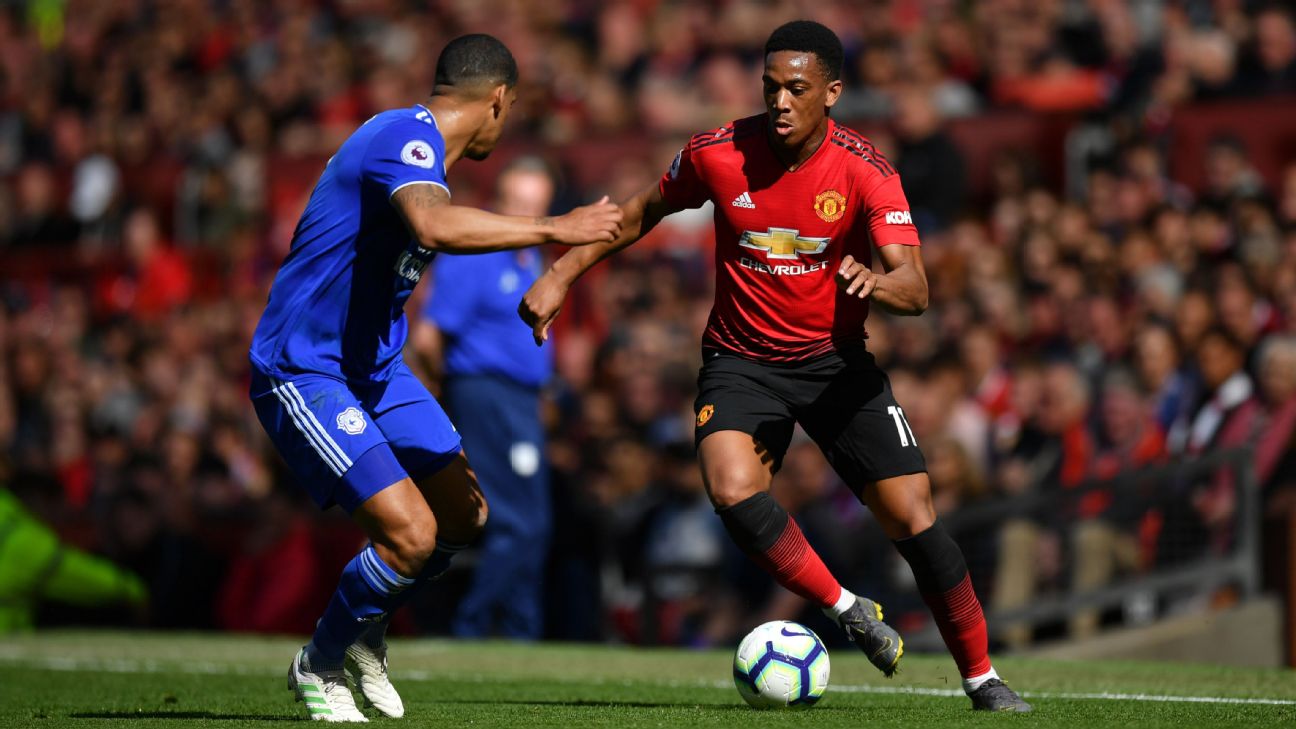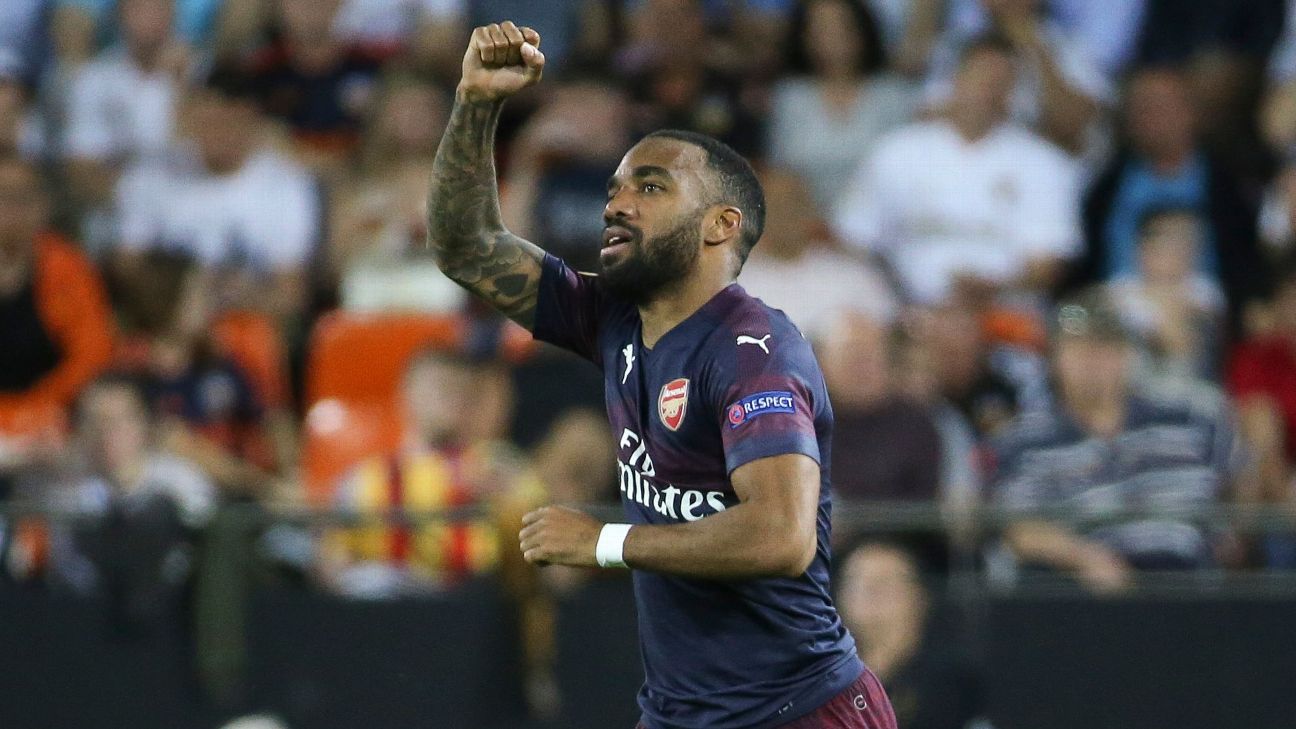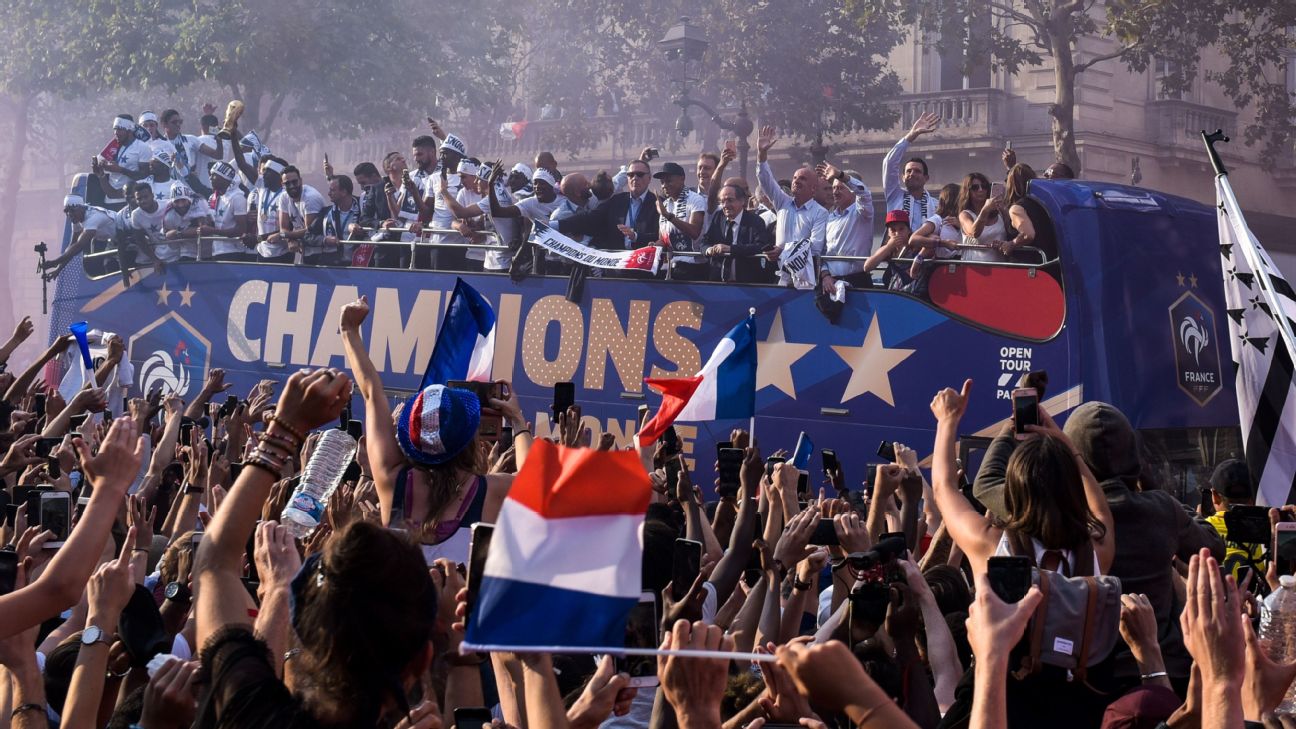When Tottenham Hotspur’s new recruit Tanguy Ndombele made his professional debut for Angers three years ago, in a French League Cup game against Clermont, there were just 1,508 people in attendance. Only 4,436 spectators saw a tall, elegant striker called Olivier Giroud make his first-team bow for Grenoble in March 2006, while scarcely five thousand people watched Kylian Mbappe‘s first run-out for Monaco in December 2015.
There’s not a great deal of glamour to go around when you’re starting out as a professional football player in France and this is the contradiction that sits at the heart of the French game. French domestic football is often accused of lacking sex appeal, yet the players it produces make fans across the world go weak at the knees. The France national team’s victory at last year’s World Cup showed that the country’s talent production line is in rude health, but the signs were there even before Hugo Lloris hoisted the gold trophy aloft beneath the Moscow rain.
There were 52 French-born players present in Russia for the tournament, making it the fourth successive World Cup at which France has supplied more players than any other competing nation. Over a quarter of the players whose teams reached the semifinals had come through French youth academies, while a study published by the CIES Football Observatory in May this year revealed that France is the second biggest global exporter of professional footballers behind Brazil. In turn, France’s Ligue de Football Professionnel has put the bankability of the country’s young stars squarely at the heart of its marketing strategy, announcing last year that Ligue 1’s new slogan would be “The League of Talents.”
– Reddy: Inside Tottenham’s summer spending
– Transfer Grades: Rating every big transfer
– Transfer To-Do Lists: What big clubs must do this summer
– 30 Under 21: The best young players in men’s soccer
Increasingly, the Paris region serves as French football’s engine room. Eight of the 23 players in Didier Deschamps‘s triumphant France squad last summer grew up in the capital’s suburbs, with several high-profile parisiens — among them Adrien Rabiot, Kingsley Coman and Anthony Martial — additionally failing to make the cut.
The multicultural, densely populated Parisian banlieues align all the elements required for an ideal football breeding ground: an extremely high concentration of young players, a plentiful supply of municipal sports facilities and a culture of fast-paced informal matches on small pitches where technical dexterity and individual expression are allowed to flourish.
“You find lots of players with high technical qualities in terms of dribbling, tricks and one-on-ones,” says Yves Gergaud, a youth coach and recruiter who helped to bring through France internationals Coman, Presnel Kimpembé and Ferland Mendy at Paris Saint-Germain. “Most of the time, they’re never more than 10 minutes away from a pitch.”
The same kind of environment can be found, albeit on a smaller scale, in the suburbs of other major French cities such as Lyon and Marseille. While France is not alone in producing lots of talented young footballers, the country also benefits from a meticulously stratified youth development system.
In 1973 the French Professional Charter came into force, obliging all professional clubs in France to establish youth academies. Today there are 37 such academies in operation, catering for around 2,000 players aged between 15 and 20. In addition, there are 22 pre-training centres — 15 for boys, seven for girls — that look after players aged 13 to 15, the most famous of which is the fabled Clairefontaine facility located in the Forest of Rambouillet, southwest of Paris. There is also one in Guadeloupe in the south Caribbean and one on the island of Réunion in the Indian Ocean, both of which are French overseas territories.
Mirroring developments in Europe’s other leading football nations, France now prizes technical ability more highly than anything else when it comes to youth recruitment and youth coaching. Former Liverpool manager Gérard Houllier successfully pushed for a greater focus on ball work at the youth level during his tenure as France’s national technical director between 1988-98. That emphasis only increased after Spanish football succeeded in reaching the summit of the sport between 2008-12.

Gerard Bonneau, a former youth recruiter at Lyon whose protégés included Martial, Samuel Umtiti, Karim Benzema, Hatem Ben Arfa, Alexandre Lacazette and Nabil Fekir, says the prototypical French player is an alliance of athleticism and technical excellence.
“The basis is a player who can adapt to any playing system and use both feet,” he told ESPN. “French players are very clean, technically, and lots of our players are naturally very athletic.
“I think I’d be able to spot a French player if I saw him playing, even if I didn’t know him.”
Coinciding with Spain’s rise, the French national team’s infamous training-ground strike at the 2010 World Cup in South Africa (an incident known simply as “Knysna,” which was where the strike took place) served to further expedite the move towards a more collective style of football.
“Simultaneously, after the emergence of Spain, there was Knysna,” former France Under-21s coach Erick Mombaerts told So Foot magazine in December. “In France, there has subsequently been even more willingness to develop the collective aspect. Because if you focus on the athletic side of things, you leave too much room for individualism. [You have to] put the collective game in the centre of everything.”
There are concerns within the French Football Federation that France’s reputation for talent production will lead to more young players being lured away before the country’s football fans have had a chance to enjoy them in the flesh. Paul Pogba joined Manchester United before he had even made his first-team debut for Le Havre and in recent years, players like Raphaël Varane, Umtiti, Martial, Coman and Ousmane Dembélé have all moved abroad before reaching their mid-20s.
But one of the reasons why France has become such a world-renowned exporter of talent is that for many of its clubs, developing young players is the only way to stay alive. PSG’s owners aside, investors have generally been reluctant to plough money into Ligue 1 clubs and with the French football authorities’ financial regulators keeping a close eye on the profit and loss sheets, funds generated by transfers acquire singular importance.

Gergaud cites the example of Sochaux, where until recently he worked as head of youth recruitment. The Ligue 2 club were facing punitive relegation to France’s third tier because they had not balanced their books, only for their youth system to come to the rescue.
“You look at Sochaux, who have thankfully been saved by their academy,” Gergaud told ESPN. “If [Lucien] Agoumé hadn’t gone to Inter Milan, if there wasn’t going to be a return on the investment in [Marcus] Thuram, if Jeando Fuchs hadn’t gone to Alavés, the club would have submitted its balance sheet and been relegated.”
The future of French youth development will involve taking more steps to address young players’ psychological needs. Lyon, whose academy is one of the best in Europe, have already made moves in that direction, setting up a psychological wellness programme that offers yoga sessions, hypnotherapy and access to mental preparation coaches for players aged 12 and above. The hope is that by treating young players more attentively, fewer talented youngsters will slip between the cracks.
“We still need to work on the mental approach towards young players who don’t ‘fit’ at the academies,” says Bonneau. “It’s about not giving up when we come across a ‘difficult’ boy. All the clubs do the right training. What we’re less good at is understanding why a player isn’t making progress.”
The World Cup win has only served to increase the number of scouts and agents stalking the banlieues, with Gergaud describing the current situation in Paris as “madness.” Every team around Europe is on the lookout for the next big thing.
In hotly tipped teenage prospects such as Lyon’s Rayan Cherki, PSG’s Adil Aouchiche and Marseille’s Isaac Lihadji, there is no shortage of candidates. And there are plenty more where they came from.
